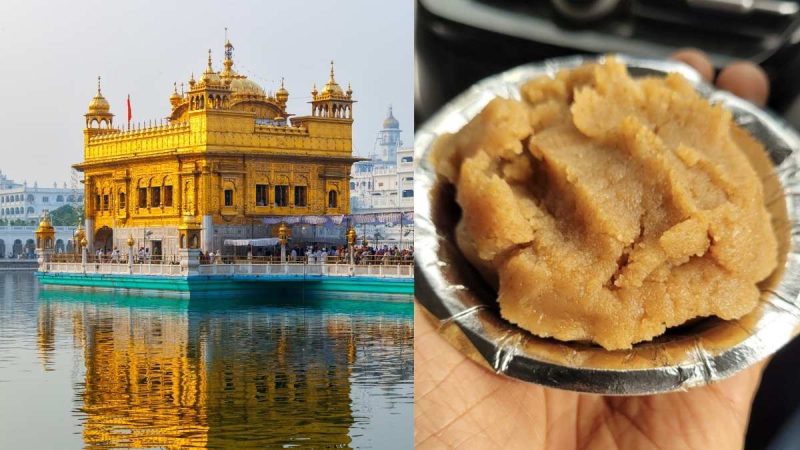There are cities that celebrate festivals, and then there is Amritsar, where festivals feel like the city’s breath has grown louder and more luminous. Visit during Guru Nanak Jayanti, and you’ll find yourself standing inside a living hymn. It’s November, the air has that first hint of winter crispness, and lantern-lit alleys carry an unmistakable rhythm: anticipation mixed with devotion.
Guru Nanak Jayanti: Why Is It Celebrated?
Guru Nanak Dev Ji, born in 1469 in Talwandi (present-day Nankana Sahib), wasn’t merely a spiritual founder; he was a radical voice of equality in an age weighed down by hierarchy. His message, Ik Onkar, one Creator, and one shared humanity, remains stitched into daily life here. The fact that Sikhism’s founder is celebrated in a city anchored by the shimmering Harmandir Sahib gives the festival a sense of homecoming, even for first-time visitors.
The date follows Kartik Purnima, the full-moon night of the Kartik month, as per the traditional lunar calendar. Practically speaking, it means Amritsar glows during late November, and though devotees never check the calendar, the city’s mood announces it well ahead.
Guru Nanak Jayanti: Scenes At Amritsar
If you wake up around 3:30 or 4 a.m., you’ll notice something curious; Amritsar is already awake. And it is not awake in the metropolitan, traffic-horn sense; it is awake like a prayer. Prabhat pheris, or pre-sunrise devotional walks, move through narrow stone lanes, accompanied by harmoniums, dholkis, and voices thick with faith. People simply walk, sing, and let sound soften the world.
Simultaneously, in gurdwaras across the city, the Akhand Path continues. Forty-eight hours of uninterrupted recitation of the Guru Granth Sahib is not theatrical; it’s gentle, steady, like breath. You hear it from loudspeakers in neighbourhood gurdwaras, drifting over rooftops like morning mist. It’s oddly grounding, almost meditative, even if you’re a visitor with no ritualistic familiarity.
Also Read: 6 Most Beautiful Temples In India Known For Their Architecture And Breathtaking Views
Harmandir Sahib: The Centre That Makes Celebrations ‘Golden’
By sunrise, streets leading to the Golden Temple begin filling with pilgrims, like couples walking hand-in-hand, young families, and backpackers unsure whether to photograph or just marvel. Despite thousands entering, the place never feels pushy; it’s astonishing how discipline emerges naturally. Inside, kirtan rolls like liquid gold, uninterrupted. The sanctum gleams as a heartbeat. People sit cross-legged along the parikrama surrounding the Amrit Sarovar, listening, sometimes silently crying, sometimes smiling without meaning to.
And then the aroma hits you. Steel buckets filled with karah prasad, the kind that melts and warms in a single bite. Volunteers ladle it out not as charity, but as an invitation. Downstairs, the langar hall is a choreography of kindness. Men in crisp turbans roll dough at lightning speed. Grandmothers fold rotis with steady and practiced hands. College students wipe benches. The fact that the largest community kitchen in the world feeds everyone, from CEOs to rickshaw drivers, becomes visible here in real time. And somehow, even with thousands streaming in, there is enough, always enough. If any moment forces reflection, this is it.
Guru Nanak Jayanti Core Experiences
Later in the day, the city erupts into a Nagar Kirtan. The Panj Pyare are dressed in saffron and blue and walk ahead, carrying the dignity and discipline of Sikh history in every step. The Guru Granth Sahib rests in a palki decorated with fresh flowers and shimmering cloth. Gatka warriors spin spears and swords, not in aggression, but with control, grace and pride. Children wave saffron flags taller than themselves. Shopkeepers pause mid-sale to bow. Somewhere, a man sweeps the road ahead of the procession. It’s voluntary; nobody asked him to do it. Seva is more like a natural instinct here.
Many visitors think Amritsar = Golden Temple + one Wagah Border selfie; they miss the layers. Slip into Gurdwara Baba Atal Rai, with its nine-storey tower watching over the temple complex. Walk to Akal Takht Sahib, the seat of temporal authority in Sikhism. Turn a corner and suddenly you’re in Hall Bazaar, where phulkari dupattas spill like rainbows and jalebi counters drip sugar syrup onto sizzling kadahis. A few minutes away sits Jallianwala Bagh, it is silent but still heavy with memory. It’s hard to ignore the juxtaposition: a massacre site next to the most peaceful shrine in the world. History never lets devotion float too far above reality here.
Also Read: Sunny Deol Visits THIS Legendary 70-YO Tea Stall In Amritsar; Savours Paneer Pakoda, Samosa And Chai
Tips And Guidelines To Follow
Book early; Amritsar isn’t shy about crowds during Gurpurab. Wear something warm for pre-dawn visits and carry a headscarf. Don’t wear shoes near the temple; keep it simple and respectful. Traffic gets playful, so walking here wins. If someone hands you kada prasad with both hands, take it similarly. And if a volunteer beckons you to sit in langar, don’t treat it like a tourist stop; stay, eat, and breathe the moment.
The best views? Stand near the sarovar after 9 p.m. Shabads still float across water, lights turn softer, and people start whispering without realising why.
Also Read: 10 Sacred Gurudwaras Across The World To Visit This Guru Nanak Jayanti
Guru Nanak Jayanti in Amritsar doesn’t overwhelm you with grandeur; it humbles you with sincerity. There is devotion and rituals, yes. But more than anything else, there is equality in action. You see it, you sit in it, you eat it, and you carry it back home. You arrive thinking it’s a festival, but you leave realising it was a reminder: sometimes, the loudest prayer is silence, shared among thousands by a shimmering pool of holy water at midnight.
Cover Image Courtesy: dmitryrukhlenko/CanvaPro and harshdeeprapal/X
For more such snackable content, interesting discoveries and the latest updates on food, travel and experiences in your city, download the Curly Tales App. Download HERE.
